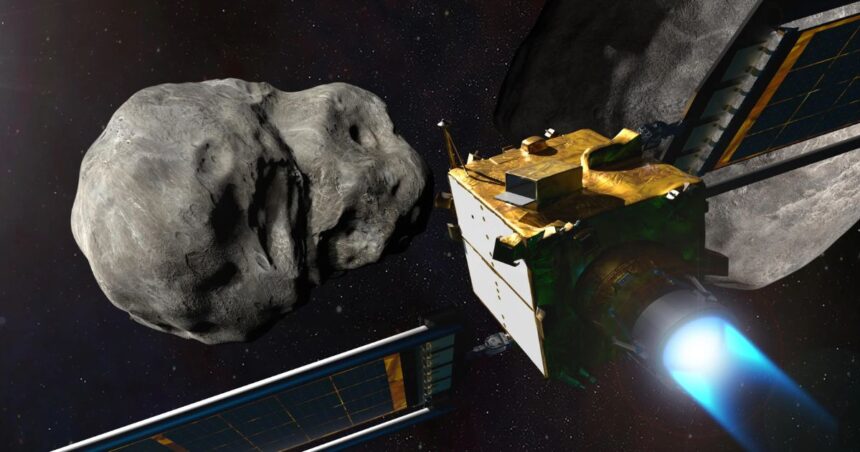Deflected asteroid Dimorphos in 2022 breaks into many pieces, and these pieces may reach Mars and our Earth in the next 10 years. But don’t worry; it led to the first human-caused meteor showers.
On September 26, 2022, NASA conducted a mission named DART mission. This mission aimed to change the path of an asteroid, and it was successful. It was the first mission to investigate and demonstrate a method of asteroid deflection and change the orbit of asteroid.
DART stands for Double Asteroid Redirection Test. DART was launched on November 24, 2021. Its targets were Didymos & Dimorphos; the objective was to impact asteroid moonlet Dimorphos. This mission mainly demonstrates kinetic impactor technology, aiming to influence an asteroid to change its path and speed.
Over 11 million kilometers from our Earth, the spacecraft intentionally crashed into the asteroid Dimorphos at a speed of 24,000 kmph. It marked the first human trial to alter the path of the object.

This was a big success for NASA. Spacecraft changed the path of an asteroid by about half an hour around its companion, Didymos. DART targets the binary asteroid system, Didymos. This binary system is composed of two asteroids. First is Didymos (larger one), 760 meters in diameter and 0.47 miles long. The second is Dimorphos, which is smaller than the first, 150 meters in diameter and 492 feet long.
The distance between these two asteroids was 1.2 kilometers. Before the impact, the orbital period of Dimorphos was 11 hours and 55 minutes, and after the impact, the orbital period was reduced by 33 minutes.
After this impact, Dimorphos changed its path and broke into pieces. Scientists’ observations said that these debris might collide with Mars in the future. There is a low possibility that this debris will reach Earth, but there is no danger for Earth.

Scientists used data from NASA’s supercomputer to evaluate data from the European Space Agency’s LICIACube spacecraft. The simulation showed many small pieces of debris expected to travel and enter Earth Moon system.
Astrophysicist Eloy Peña-Asensio told Universe Today that these faster particles are expected to be too small to produce visible meteors. Ongoing meteor observation campaigns will definitively determine if DART has indeed created a new (and human-created) meteor shower.




